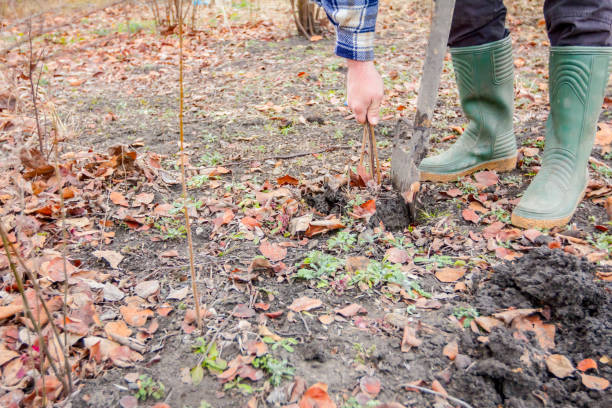Late October is right around the corner, when your summer garden will be relinquishing its duties and hanging on by a thread.
Most gardeners can see that winter is a period of well-deserved rest for both their gardens and themselves, but there are important tasks to do before the hot chocolate weather arrives.
Learn how to prepare your garden for winter by following these five tips below:
Soil Care
The weeks leading up to winter are the perfect time to check the PH levels of your soil so your plants can safely go into hibernation.
The optimal level is a PH of 6.5, and you can do a home test so you know how to adjust them with a liming material.
Use a hand trowel and remove some soil from 5 or 6 different parts of your garden and add it to a clear jar with a lid. Fill the jar with water, put the lid on securely, and shake the jar vigorously for 30 seconds until the contents have been thoroughly mixed.
Leave the contents to settle until the water turns clear again.
Three or four layers will form. The top floating layer is organic matter, the second is silt, the third is clay, and the fourth is sand.
Measure the height of each layer and divide it by the total measurement of the three main layers. Ideal soil is comprised of 40% silt, 40% sand, and 20% clay.
Frost Covers
While some plants and vegetables can withstand colder temperatures, you can extend the life of your more sensitive plants by utilizing frost covers, which act as a cozy blanket for the winter period.
This is a great tip for first-time homeowners looking to keep their gardens beautiful all year round.
Frost covers keep out the wind chill, moisture, and frost, the three things that cause the most damage to plants.
Remove Deadwood
Dead or decaying branches or trees are not only an eyesore, but they are also hazardous during the winter months. Storms, snow, and cold weather can make them an accident waiting to happen.
Before the cold months set in, get your chainsaw out and bring down any deadwood in your garden. Keep your saw sharp and ready for use with a reliable chainsaw sharpener.
Learn how to sharpen your chainsaw safely and effectively before starting the job.
Lawn Love
Late autumn is the perfect time to aerate your lawn if you have warm-season grass.
That provides your lawn with a range of benefits, such as improving airflow and increasing drainage.
Lawn aeration must be done before the grass goes dormant. All you need is a fork, garden boots, and loads of elbow grease!
Dig the fork into the ground, driving as deeply as possible, and then work the fork back and forth with your hand to create inch-wide holes.
Repeat this process every 30 or 40cm.
Prune Hard
Use a sharp pair of sterilized pruning scissors or secateurs and start pruning by removing damaged, diseased, or dead sections. For optimal top growth, cut directly above outward-facing buds nearest to the trunk or main stem.
Try to get as close to the bud as possible to prevent issues. Cut at a 90-degree angle and allow the water to run off so the wound can dry.
In Conclusion
Always use high-quality, durable garden tools and equipment to yield the best results.

